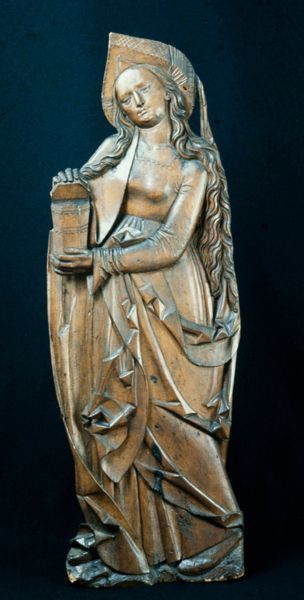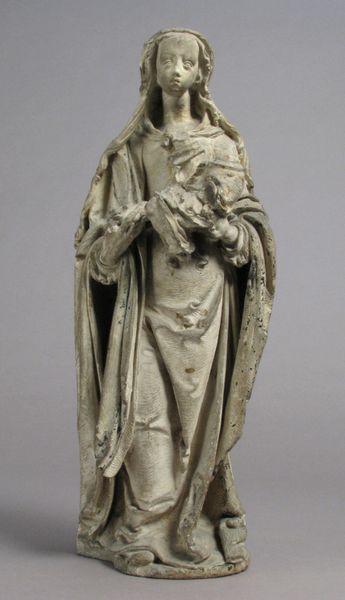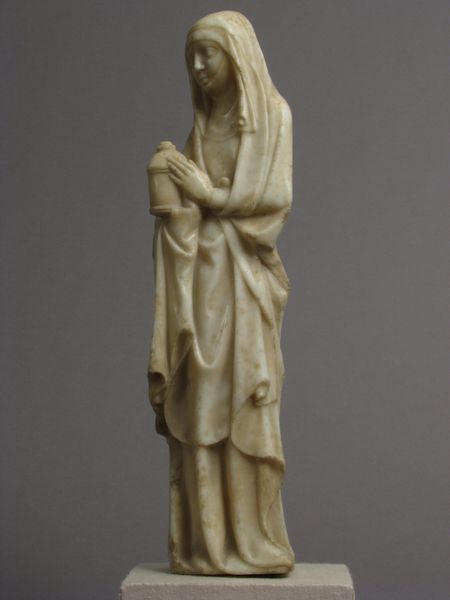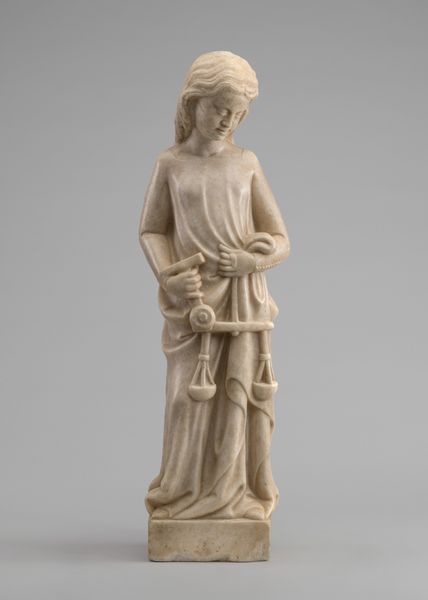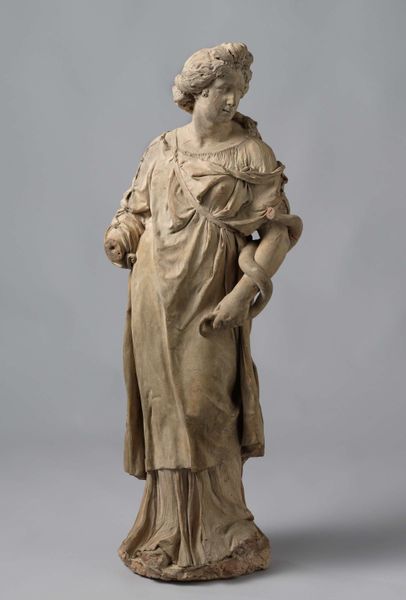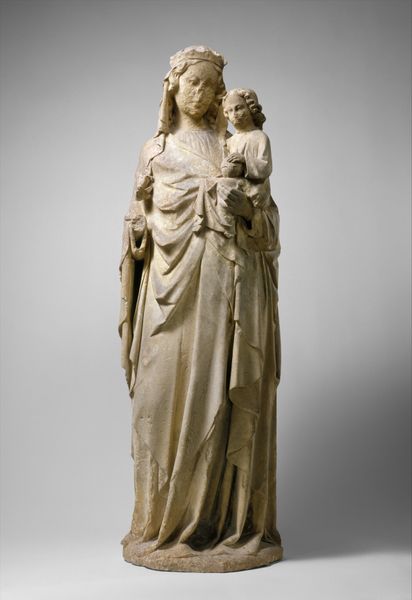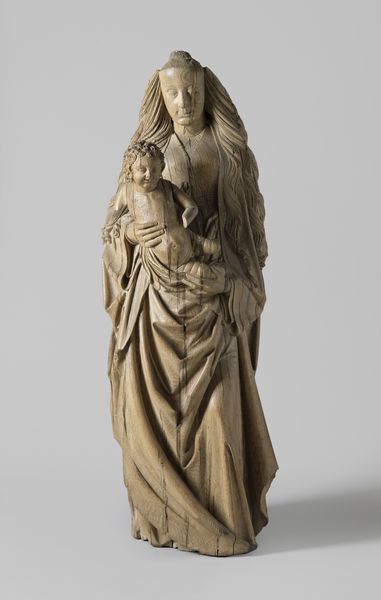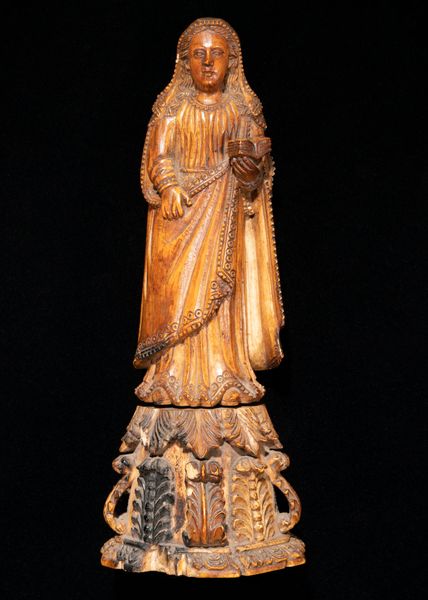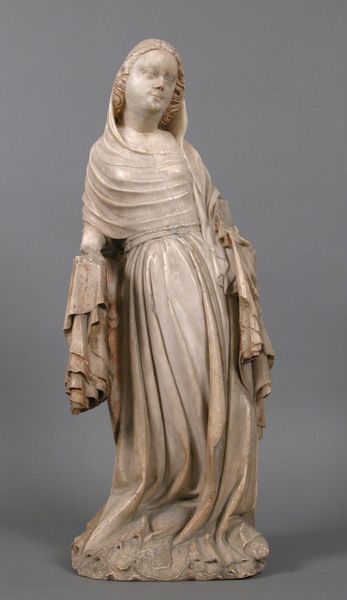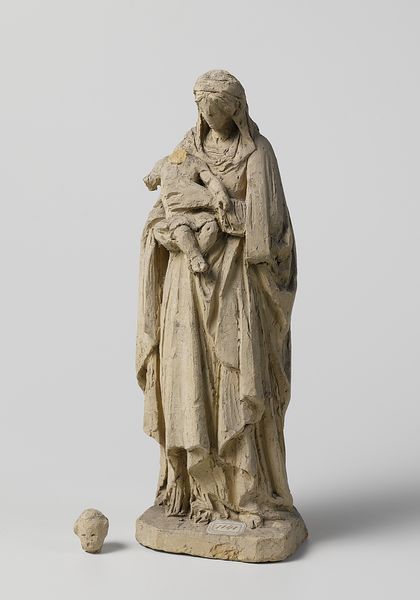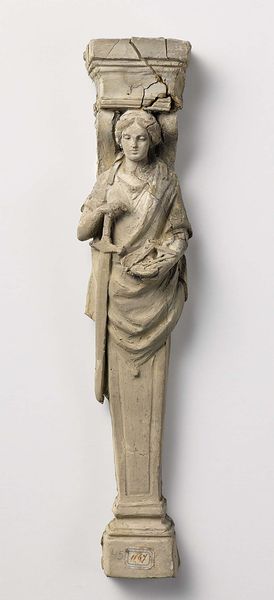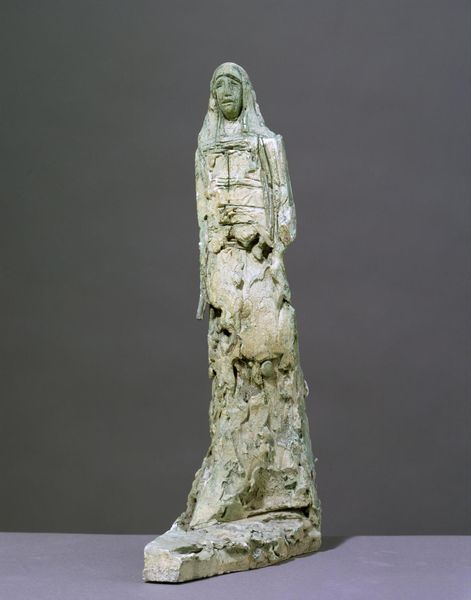
sculpture
#
3d sculpting
#
ruined
#
structure
#
stone
#
sculpture
#
sculptural image
#
unrealistic statue
#
sculpting
#
sculpture
#
france
#
men
#
medieval-art
#
ruin
#
statue
Dimensions: Overall: 20 x 7 x 5 1/2in. (50.8 x 17.8 x 14cm)
Copyright: Public Domain
Editor: Here we have "Saint Barbara," a 16th-century sculpture by the School of Troyes, currently housed at the Metropolitan Museum of Art. I find the contrast between the delicate figure of Saint Barbara and the ruined tower beside her so compelling, what do you see in this piece? Curator: The juxtaposition is certainly striking. For me, it's a powerful visual representation of female strength in a patriarchal society. Saint Barbara, a woman imprisoned in a tower for her beliefs, stands as a symbol of defiance. Her unwavering faith, despite facing persecution and ultimate martyrdom, makes her an emblem of resistance. Editor: That's a perspective I hadn't considered. The tower always seemed like a straightforward attribute, representing her imprisonment. But you're framing it as a symbol of the forces trying to contain her. Curator: Precisely. And consider the cultural context: in 16th-century France, women often lacked agency and were confined to specific roles. Barbara's story, rendered in sculpture, becomes an act of visual protest. It's also vital to remember the function of religious art at the time – did the sculpture served as a comfort to other oppressed members of society and provide them hope to become radical figures too? Editor: So you're saying this wasn't just a devotional object, but a potentially subversive statement about female empowerment? Curator: It's highly possible. The image prompts questions about power, faith, and societal expectations. How does Barbara defy these constructs within the visual language of the piece? Editor: It makes you think about how even religious art can be read through a critical lens. I am going to consider context more when I study works of this era going forward. Curator: That’s exactly the point – art is always in dialogue with the world around it, reflecting and, sometimes, challenging the status quo.
Comments
No comments
Be the first to comment and join the conversation on the ultimate creative platform.
